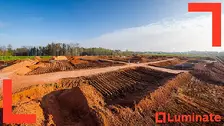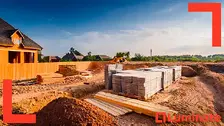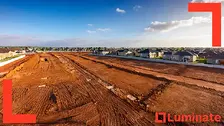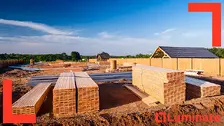How to Subdivide Land in New Zealand: A Step-by-Step Practical Guide
 By
Trent Bradley
·
12 minute read
By
Trent Bradley
·
12 minute read

Subdividing land in New Zealand can create significant value and development opportunities, but success requires understanding complex processes, regulatory requirements, and market dynamics. This comprehensive practical guide takes you through every step of the subdivision process, from initial assessment through final title creation, providing actionable advice for property owners and developers seeking to maximize land value through subdivision.
Table of Contents
- Step 1: Initial Feasibility Assessment
- Step 2: Professional Team Assembly
- Step 3: Detailed Site Investigation
- Step 4: Subdivision Design Development
- Step 5: Regulatory Approval Process
- Step 6: Infrastructure Development
- Step 7: Title Creation and LINZ Processing
- Step 8: Marketing and Sales Strategy
- Step 9: Common Challenges and Solutions
- Step 10: Optimization and Value Enhancement
- Regional Considerations and Variations
- Working with Subdivision Finance Specialists
- Frequently Asked Questions
Key Takeaways
- Subdivision feasibility assessment requires site analysis calculating potential lot yield, zoning review understanding minimum lot sizes and setbacks, market research validating pricing, and high-level cost estimation using industry benchmarks
- Professional team assembly needs licensed cadastral surveyors, planning consultants with local council relationships, civil engineers for infrastructure, and solicitors with subdivision expertise—budget $40,000-$100,000+ total professional fees
- Detailed site investigation includes topographical surveys, geotechnical assessment identifying soil conditions, contamination investigation for previous land uses, ecological assessment for native vegetation, and infrastructure capacity research
- Pre-application consultation with council planners identifies potential issues, clarifies expectations, and streamlines processing—investment in pre-application often reduces formal processing time by weeks or months
- Infrastructure development requires experienced contractors, detailed construction documentation, council inspection coordination, quality assurance including material testing, and progress monitoring against schedules and budgets
- Title creation through LINZ requires final survey plans meeting standards, council compliance certificates confirming consent condition satisfaction, comprehensive submissions with documentation, and processing management over several months
- Common challenges include regulatory complications, unexpected site conditions, infrastructure cost overruns, market timing issues, and cash flow management—include 15-20% contingencies addressing unforeseen expenses
- Auckland subdivision faces complex regulatory requirements with 12-24 month processing times, while provincial markets provide more streamlined processing with direct relationships but different market dynamics
Step 1: Initial Feasibility Assessment
Before committing to subdivision, conduct thorough feasibility assessment to understand potential, costs, and market prospects.
Site Analysis and Potential: Begin with comprehensive site analysis including size, configuration, topography, access, and existing improvements. Calculate potential lot yield based on zoning requirements, considering minimum lot sizes, setback requirements, and access provisions. Use conservative estimates initially to avoid over-optimistic projections.
Zoning and Regulatory Review: Research current zoning provisions including permitted subdivision standards, minimum lot sizes, infrastructure requirements, and any special overlays or constraints. Download relevant district plan sections and identify all applicable rules and assessment criteria.
Market Research and Validation: Investigate local market conditions including recent subdivision sales, current listings, absorption rates, and target buyer profiles. Compare similar subdivision projects to understand pricing potential, market positioning, and competitive dynamics.
High-Level Cost Estimation: Develop preliminary cost estimates including professional fees, council costs, infrastructure development, and contingencies. Use industry benchmarks and local professional advice to validate cost assumptions and identify major expense categories.
Financial Modeling: Create initial financial models showing acquisition costs, development expenses, revenue projections, and return calculations. Include sensitivity analysis testing various scenarios including cost variations and market changes.
Risk Assessment: Identify major risks including regulatory constraints, market conditions, site complications, and financial factors. Assess risk likelihood and potential impact to inform go/no-go decisions and risk management planning.
Step 2: Professional Team Assembly
Successful subdivision requires coordinated professional expertise across multiple disciplines.
Licensed Surveyor Selection: Engage experienced cadastral surveyors with local knowledge and strong council relationships. Verify current licensing, insurance coverage, and recent subdivision experience. Request references from similar recent projects and understand fee structures and service inclusions.
Planning Consultant Engagement: Select planning consultants with subdivision expertise in your target council area. Consider their council relationships, recent consent success rates, and communication style. Ensure they understand your development objectives and timeline requirements.
Civil Engineering Professionals: Identify civil engineers with subdivision infrastructure experience including road design, stormwater management, and utility coordination. Verify their council pre-approval status and recent project experience in similar developments.
Legal Advisory Services: Engage solicitors with property development and subdivision expertise. Ensure they understand subdivision law, consent conditions, and LINZ processes. Consider their availability throughout the project timeline and fee arrangements.
Project Coordination: Establish clear coordination protocols including regular meetings, communication systems, and decision-making processes. Assign coordination responsibilities and ensure all professionals understand their roles and interdependencies.
Fee Management: Negotiate clear fee arrangements with all professionals including scope definition, milestone payments, and variation procedures. Budget adequate professional fees recognizing they represent essential project investments.
Step 3: Detailed Site Investigation
Comprehensive site investigation identifies opportunities, constraints, and development requirements.
Topographical Surveying: Commission detailed contour surveys showing existing levels, drainage patterns, vegetation, and improvements. Quality topographical information enables accurate design development and cost estimation while identifying potential complications early.
Geotechnical Assessment: Conduct geotechnical investigation including soil testing, groundwater assessment, and foundation recommendations. Geotechnical information influences road design, lot layouts, and infrastructure requirements while identifying potential construction challenges.
Contamination Investigation: Research site history and conduct contamination assessment if previous land uses suggest contamination potential. Contaminated land requires specialist management and can significantly impact subdivision feasibility and costs.
Ecological Assessment: Investigate ecological values including native vegetation, wetlands, and wildlife habitat that may require protection or mitigation. Ecological constraints can affect lot layouts and create ongoing management obligations.
Heritage and Archaeological: Research cultural and archaeological significance including Māori cultural values and European heritage sites. Heritage constraints may affect subdivision design and require specialist consultation and consent processes.
Infrastructure Capacity: Investigate existing infrastructure capacity including water supply, wastewater disposal, stormwater systems, and utility services. Infrastructure constraints often represent major subdivision obstacles requiring expensive upgrades.
Step 4: Subdivision Design Development
Transform site analysis into practical subdivision layouts that optimize value while meeting regulatory requirements.
Concept Design Development: Develop multiple concept designs exploring different lot arrangements, road layouts, and infrastructure approaches. Consider various scenarios including different lot numbers, sizes, and market positioning strategies.
Lot Layout Optimization: Design lot layouts that maximize saleable area while meeting regulatory requirements including minimum sizes, setbacks, and access provisions. Consider future building potential, views, privacy, and market appeal in lot configuration.
Road and Access Design: Design internal road systems that efficiently serve all lots while meeting council construction standards. Consider intersection requirements, emergency access, pedestrian facilities, and integration with existing road networks.
Infrastructure Planning: Plan water supply, wastewater disposal, stormwater management, and utility systems that serve all lots efficiently while meeting environmental and council standards. Consider system capacity, maintenance requirements, and connection costs.
Stormwater Management: Design comprehensive stormwater systems including collection, treatment, and disposal that protect downstream environments while managing flood risks. Modern stormwater standards emphasize water quality treatment and flow control.
Landscape and Environmental Integration: Integrate subdivision design with existing landscape features, environmental values, and community character. Consider tree retention, landscape corridors, and visual impact mitigation in design development.
Step 5: Regulatory Approval Process
Navigate council consent processes to obtain subdivision approval and development rights.
Pre-Application Consultation: Engage council planners through pre-application processes to discuss subdivision concepts, identify potential issues, and understand council expectations. Pre-application investment often reduces formal processing time and costs.
Consent Application Preparation: Prepare comprehensive subdivision consent applications including detailed plans, assessment of environmental effects, technical reports, and supporting documentation. Application quality significantly influences processing speed and success rates.
Technical Report Commissioning: Commission required specialist reports including traffic assessments, ecological surveys, archaeological evaluations, and engineering reports. Technical reports must address specific assessment criteria and council requirements.
Consultation Requirements: Manage required consultation including neighbor notification, iwi engagement, and community consultation where required. Professional consultation management often prevents opposition while building project support.
Council Processing Management: Actively manage consent processing including responding to information requests, coordinating with council staff, and addressing concerns promptly. Responsive processing management maintains momentum and prevents unnecessary delays.
Consent Condition Negotiation: Review proposed consent conditions and negotiate modifications where conditions are impractical or unreasonable. Understanding council objectives enables condition discussions that achieve acceptable outcomes for all parties.
Step 6: Infrastructure Development
Transform approved subdivision designs into physical infrastructure that serves subdivision lots effectively.
Contractor Selection: Select experienced infrastructure contractors with subdivision experience, appropriate equipment, and quality references. Consider both technical capability and project management competence in contractor selection.
Construction Documentation: Develop detailed construction documentation including specifications, drawings, and quality standards. Quality documentation prevents misunderstandings while ensuring design intent achievement and regulatory compliance.
Project Management Systems: Implement comprehensive project management including progress monitoring, quality control, cost management, and stakeholder communication. Effective project management prevents problems while ensuring completion within budget and timeline.
Council Inspection Coordination: Coordinate required council inspections throughout construction including foundation approval, drainage testing, and final completion certificates. Inspection coordination prevents delays while ensuring regulatory compliance.
Quality Assurance: Implement rigorous quality control throughout construction including material testing, construction inspection, and compliance verification. Quality control prevents costly rectification work while ensuring long-term infrastructure performance.
Progress Monitoring and Reporting: Monitor construction progress against planned schedules and budgets with regular reporting to stakeholders including financiers and investors. Progress monitoring enables proactive problem-solving and expectation management.
Step 7: Title Creation and LINZ Processing
Complete legal processes that create individual lot titles enabling sales and development.
Survey Plan Preparation: Commission final survey plans showing completed subdivision boundaries, infrastructure locations, and compliance with consent conditions. Survey plans must meet LINZ standards and demonstrate consent condition satisfaction.
Compliance Certificate Applications: Apply for council compliance certificates confirming subdivision completion and consent condition satisfaction. Compliance certificates are typically required before LINZ will process title applications.
LINZ Submission Preparation: Prepare comprehensive LINZ submissions including survey plans, consent documentation, compliance certificates, and title application forms. LINZ processing requires meticulous documentation and professional coordination.
Title Processing Management: Manage LINZ title processing including responding to requisitions, providing additional information, and coordinating with LINZ staff. Title processing can take several months requiring patient but persistent management.
Quality Assurance and Checking: Implement quality checking throughout title creation including survey accuracy verification, documentation completeness, and regulatory compliance confirmation. Quality assurance prevents processing delays and ensures accurate title creation.
Completion and Settlement Preparation: Prepare for subdivision completion including final cost reconciliation, stakeholder settlement, and lot sales preparation. Completion preparation ensures smooth transition to sales and development phases.
Step 8: Marketing and Sales Strategy
Develop and implement marketing strategies that optimize subdivision lot sales and returns.
Market Positioning: Develop clear market positioning highlighting subdivision advantages including location benefits, lot characteristics, and development potential. Market positioning should differentiate your subdivision from competing developments.
Pricing Strategy: Establish pricing strategies based on market analysis, development costs, and target return objectives. Consider various pricing approaches including individual lot pricing, package deals, and staged release strategies.
Sales Team Selection: Engage experienced real estate professionals with subdivision sales experience and local market knowledge. Sales team quality significantly influences sales success and buyer satisfaction.
Marketing Material Development: Create professional marketing materials including subdivision plans, lot information, development concepts, and lifestyle imagery. Quality marketing materials enhance market appeal and support premium positioning.
Launch Strategy Planning: Plan subdivision launch strategies including timing, promotional activities, and stakeholder engagement. Effective launch strategies create market excitement and momentum for ongoing sales success.
Settlement Process Management: Establish efficient settlement processes including legal documentation, finance coordination, and buyer liaison. Professional settlement management ensures positive buyer experiences and referral opportunities.
Step 9: Common Challenges and Solutions
Understanding typical subdivision challenges enables proactive problem-solving and successful project completion.
Regulatory Complications: Complex or changing regulatory requirements can create consent delays or additional costs. Maintain professional relationships and flexible approaches to navigate regulatory challenges effectively.
Site Condition Surprises: Unexpected site conditions including contamination, archaeological sites, or geotechnical issues can create delays and costs. Include adequate contingencies and maintain specialist professional relationships for expert problem-solving.
Infrastructure Cost Overruns: Infrastructure costs often exceed estimates due to specification changes, site conditions, or market factors. Implement rigorous cost control and maintain contingency reserves for cost management.
Market Timing Issues: Market conditions can change during subdivision development affecting sales success and pricing. Maintain market monitoring and flexible sales strategies to adapt to changing conditions.
Council Relationship Management: Poor council relationships can create processing delays and complications. Invest in positive relationship building and professional engagement to facilitate smooth regulatory processes.
Cash Flow Management: Subdivision development creates lumpy cash flows with major expenditure periods before revenue generation. Implement careful cash flow planning and maintain adequate funding throughout development periods.
Step 10: Optimization and Value Enhancement
Implement strategies that optimize subdivision value and returns throughout development and sales processes.
Design Value Engineering: Continuously review design approaches to optimize value including lot yield maximization, infrastructure efficiency, and market appeal enhancement. Value engineering should balance cost control with market positioning requirements.
Phased Development: Consider phased development approaches that enable early revenue generation while spreading development costs and risks. Phasing can improve cash flows while enabling market response adaptation.
Infrastructure Optimization: Optimize infrastructure design for efficiency including road layouts, utility routing, and stormwater systems. Infrastructure optimization reduces costs while improving subdivision functionality and appeal.
Market Response Integration: Monitor market feedback and buyer preferences to optimize remaining development phases and marketing approaches. Market responsiveness enables continuous improvement and maximizes sales success.
Professional Relationship Leverage: Leverage professional relationships for problem-solving, cost optimization, and efficiency improvements. Quality professional relationships provide ongoing value throughout subdivision development.
Future Development Consideration: Consider future development potential in subdivision design including provision for additional stages, infrastructure capacity, and market evolution. Forward planning enables long-term value optimization.
Regional Considerations and Variations
Subdivision processes vary across New Zealand's regions requiring location-specific approaches and expertise.
Auckland Subdivision: New Zealand's largest city has complex regulatory requirements but strong market demand. Auckland subdivision requires sophisticated professional expertise and patience with regulatory processes.
Provincial Markets: Smaller cities often provide more streamlined processing with direct professional relationships. Provincial subdivision may involve different market dynamics and absorption rates requiring adjusted strategies.
Rural Area Subdivision: Rural subdivision faces different regulatory requirements including minimum lot sizes, infrastructure provision, and environmental protection. Rural markets often target lifestyle buyers with different preferences and financial capabilities.
Coastal and Tourism Areas: Subdivision in coastal or tourism areas may face additional regulatory constraints but can command premium pricing. These markets often experience greater volatility requiring careful timing and market analysis.
Working with Subdivision Finance Specialists
Subdivision development requires specialist financing that understands the unique characteristics, timing, and risk profiles of subdivision projects.
At Luminate Finance, we specialize in subdivision finance and provide comprehensive support throughout the subdivision process from initial feasibility through final title creation and sales completion.
Our extensive experience across diverse subdivision types and regional markets enables us to provide valuable guidance on feasibility assessment, development optimization, and risk management throughout subdivision development.
We understand the specific financing requirements of subdivision development including staged funding needs, infrastructure development costs, and sales absorption patterns that create unique cash flow characteristics requiring specialist financial structuring.
Our comprehensive approach includes feasibility review, financing optimization, progress monitoring, and ongoing support that helps developers navigate subdivision complexity while achieving optimal financial outcomes.
Through our involvement in numerous subdivision projects across New Zealand, we've developed deep understanding of subdivision success factors and can provide valuable guidance on professional team selection, council relationships, and market positioning.
Our network of professional relationships provides access to experienced surveyors, planners, engineers, and contractors who contribute to subdivision success through quality professional input and coordinated project delivery.
Frequently Asked Questions
How long does the complete subdivision process take from start to finish?
Complete subdivision timeline varies dramatically by complexity and location. Simple two-lot subdivision: 12-18 months total (feasibility and site acquisition 2-4 months, detailed investigation and design 2-3 months, consent processing 4-8 months, infrastructure construction 2-4 months, title creation 2-3 months). Multi-lot subdivision (4-10 lots): 18-30 months (feasibility 3-4 months, investigation and design 3-6 months, consent processing 6-12 months, infrastructure construction 4-8 months, title creation 3-4 months). Large complex subdivision (20+ lots): 24-48+ months with extended design, consenting, and staged infrastructure phases. Auckland adds 20-30% to timelines due to council processing volumes. Provincial councils often process faster but may lack specialist expertise for complex projects. Build realistic timelines with 20-30% contingency—optimistic projections create pressure and poor decisions. Use consent processing time productively for contractor selection, financing finalization, and marketing preparation. Don't rush—comprehensive preparation prevents expensive mistakes during construction when rectification costs multiply.
What are the total costs to subdivide land and how should I budget?
Subdivision costs vary by lot number, site complexity, and location. Simple two-lot subdivision typical costs: surveying ($8,000-$15,000), planning consent ($10,000-$20,000), engineering design ($5,000-$15,000), council fees ($5,000-$15,000), infrastructure construction ($20,000-$80,000 depending on services), legal fees ($5,000-$10,000), and contingency (15-20%). Total: $60,000-$180,000. Multi-lot subdivision (4-10 lots): surveying ($15,000-$35,000), planning ($15,000-$40,000), engineering ($20,000-$60,000), council fees ($10,000-$30,000), infrastructure ($80,000-$300,000), legal ($10,000-$20,000), contingency (15-20%). Total: $180,000-$550,000+. Costs per lot typically decrease with scale—first two lots most expensive, additional lots add incremental costs. Budget conservatively with detailed line-item estimates from professionals. Hidden costs include holding costs (rates, interest) during 12-30 month development, utility connection fees, contamination remediation if discovered, and additional reports if issues emerge. Create detailed cash flow projections showing when funds needed throughout development—lump sum payments for infrastructure create peak funding requirements.
Can I subdivide my property myself or do I need professionals?
Legally you can attempt DIY subdivision, but practically it's inadvisable except for simplest boundary adjustments. Subdivision requires: cadastral surveying (must be licensed surveyor—legally required), resource consent applications (planning expertise dramatically improves success—councils scrutinize applications heavily), engineering design for infrastructure (civil engineering expertise required for compliant design), legal documentation for title creation (solicitor involvement required for LINZ processes), and project management coordinating multiple phases and professionals. Attempting DIY subdivision creates risks: consent applications declined due to inadequate preparation requiring resubmission with delays and additional costs, infrastructure design failing to meet council standards requiring redesign, construction compliance issues delaying completion, and title creation complications from procedural errors. Even if you have technical skills in one area, subdivision requires coordinated expertise across multiple disciplines. Better approach: engage experienced professionals from project start, learn through observation building knowledge for future projects, and focus your time on project management and decision-making rather than technical execution. Professional fees ($40,000-$100,000+) seem expensive but prevent mistakes costing far more in delays, rectification, and lost opportunities.
What's the minimum land size needed for subdivision?
Minimum subdivision size depends entirely on local zoning rules—no universal standard exists across New Zealand. Typical patterns: urban residential zones often allow 300-500m² minimum lots enabling subdivision of 800-1,000m² properties into two lots, suburban zones may require 500-800m² minimums, and lifestyle/rural-residential zones often mandate 2,000-10,000m² minimums with rural zones sometimes requiring 4+ hectares. However, these are generalizations—actual requirements vary dramatically between councils and specific zones. Research your property's specific zoning through council district plan, checking: minimum lot size (may vary for subdivision versus permitted development), average lot size calculations (some zones require average size calculations), shape factors (minimum width, depth, frontage requirements), building platform requirements (adequate flat building areas), and setback requirements (affecting usable lot area). Some properties meet size minimums but fail other tests like adequate access, service availability, or building platforms. Request LIM report ($200-$400) showing zoning and known constraints, then consult planning professional ($500-$2,000) for definitive subdivision potential assessment before purchasing property for subdivision purposes.
Do I need council consent to subdivide and what does the process involve?
Yes, almost all subdivision requires resource consent from local councils under Resource Management Act 1991. Process: pre-application meeting with council planners (free or nominal cost) discussing concept and requirements, application preparation by planning consultant with surveys, assessments, and technical reports ($10,000-$40,000), formal application submission with council fees ($5,000-$15,000+), council processing including assessment, potential information requests, and possible public notification (4-12 months typically), consent decision granting approval with conditions, appeals period (usually 15 working days) where consent can be challenged, and conditions satisfaction before proceeding. Some simple subdivisions may be "controlled activity" with streamlined processing, while complex proposals require "discretionary activity" assessment with higher decline risk. Public notification adds 2-6 months and creates submission/hearing processes—avoid notification through quality applications addressing effects. Consent conditions typically require: infrastructure construction to standards, engineering certification, compliance certificates, financial contributions, and ongoing maintenance requirements. Subdivision cannot proceed without resource consent—councils actively enforce through stop-work notices, fines, and prosecution. Budget 6-15 months for consent processing depending on complexity and council, building timeline contingencies accounting for processing variations.
What happens if the council declines my subdivision consent application?
Consent decline creates significant problems but isn't necessarily project-ending. Options after decline: appeal decision to Environment Court within 15 working days challenging council assessment (requires legal representation, costs $20,000-$100,000+, takes 6-18+ months, uncertain outcome), request council reconsider decision if decline based on misunderstanding or missing information (rare success), redesign subdivision addressing decline reasons and reapply (most common approach—costs another $10,000-$30,000, delays project 6-12 months), or abandon subdivision plans and explore alternative land uses. Prevent declines through: comprehensive pre-application consultation identifying and addressing concerns before formal application, quality applications with complete information and professional documentation, proactive neighbor engagement preventing opposition, and realistic design respecting district plan provisions rather than pushing boundaries. Some applications test planning boundaries and face higher decline risk—understand your risk tolerance and financial capacity to absorb decline costs before proceeding. If council signals likely decline during processing, consider withdrawing application, redesigning, and resubmitting rather than proceeding to formal decline. Work with experienced planning consultants who understand local council approaches and can advise on application success prospects before major investment.
Ready to subdivide your land with comprehensive professional support? Contact Luminate Finance today to discuss how our subdivision expertise and specialized financing solutions can guide your subdivision development from initial concept through successful completion and sales.

Trent Bradley
Trent Bradley is a New Zealand financial advisor specializing in property-backed finance and investment consulting. With over 26 years of experience running his mortgage broking business, he has helped wholesale investors access high-yield property-backed loan opportunities. For the past 12 years, Trent has led Luminate Finance, a New Zealand finance company dedicated to connecting investors with secure property investment solutions.

































.png?//48413319.fs1.hubspotusercontent-ap1.net/hubfs/48413319/Featured%20images%20(14).png&width=247&height=126&name=Featured%20images%20(14).png)




